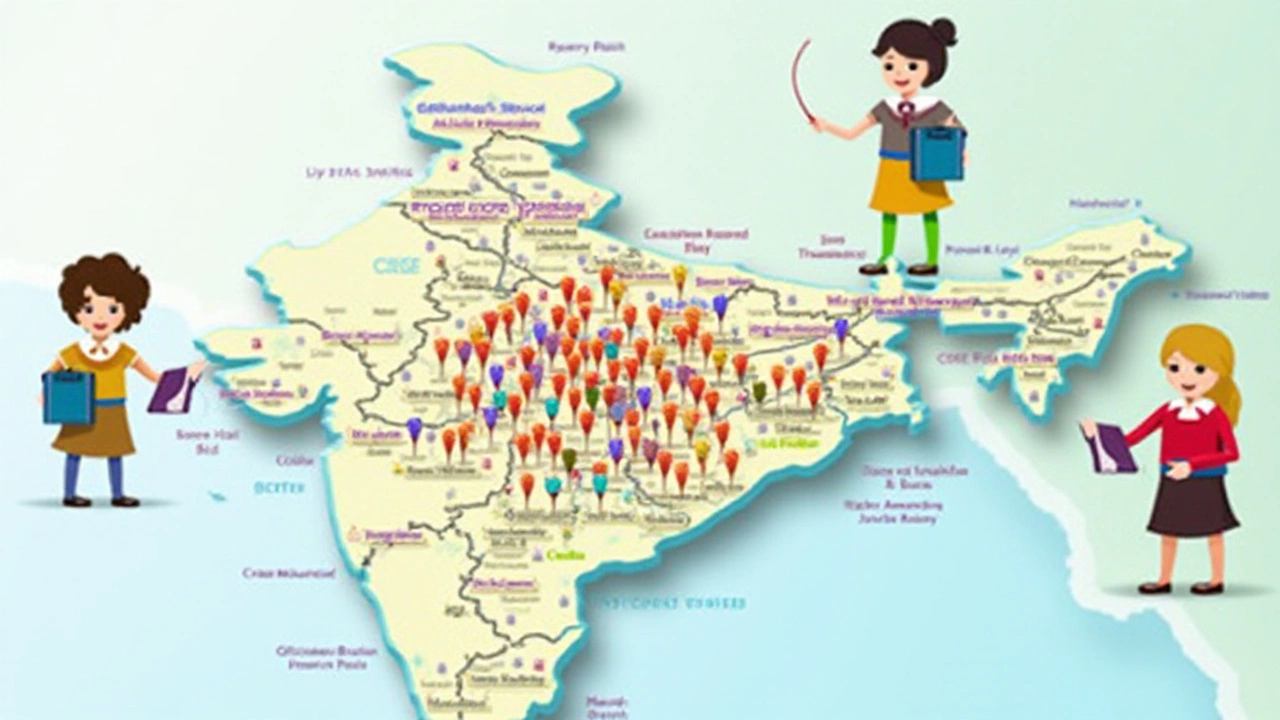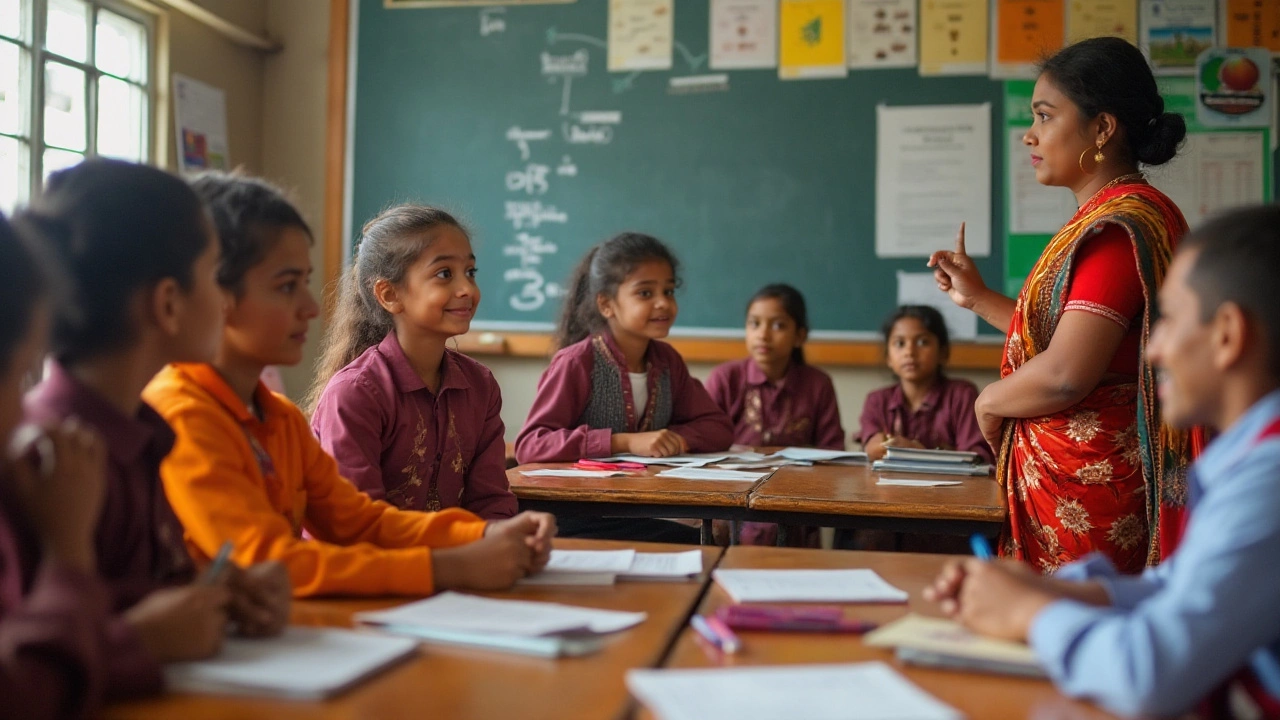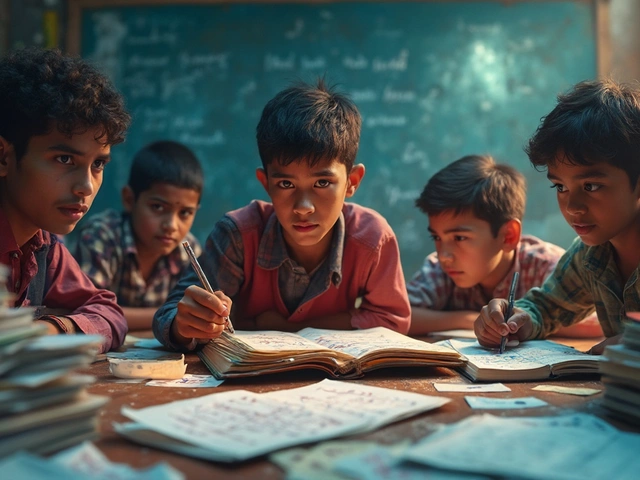
The Central Board of Secondary Education, popularly known as CBSE, holds a pivotal place in the Indian education landscape. With its rigorous academic standards and holistic curriculum, CBSE continues to set benchmarks for schools across the country.
Education enthusiasts and parents are often curious about which Indian state boasts the highest number of CBSE-affiliated schools, as this reflects not only the popularity of the board but also regional educational priorities. Let's explore this topic to uncover the state that leads the pack and the implications of this dominance in the realm of Indian schooling.
- Understanding CBSE's Role in Indian Education
- Factors Influencing the Number of CBSE Schools
- The Leading State for CBSE Schools
- Education Trends and Impact
- Tips for Choosing a CBSE School
Understanding CBSE's Role in Indian Education
The CBSE, or Central Board of Secondary Education, is one of the most prominent education boards in India, playing a crucial role in shaping the academic journey of millions of children. Established in 1929, it was primarily aimed at providing a standardized form of education, adaptable across states. The board administers exams up to higher secondary levels, with its curriculum designed to foster a robust foundation in mathematics, the sciences, languages, and social sciences, nurturing students for competitive exams like JEE and NEET that define their careers. The uniformity and rigor it maintains across its member schools are noteworthy, ensuring that education quality does not vary drastically from one region to another.
The growing popularity of CBSE can be attributed to its comprehensive syllabus that not only focuses on textbooks but also encourages practical learning. This blend of theoretical and practical knowledge is critical for developing problem-solving skills among students, which is a key aspect of modern education. Schools affiliated with CBSE are known to provide a balanced emphasis on academics and extracurricular activities, instilling confidence and an all-round development that prepares students for future endeavors. The board has also incorporated various contemporary teaching methodologies that include activity-oriented lessons and digital classrooms, making learning an interesting experience for young minds.
"CBSE's curriculum is designed to match international standards while being culturally relevant and pedagogically sound," said Anita Karwal, a former CBSE chairperson, highlighting the board’s adaptive nature.
One of CBSE's noteworthy features is its recognition by several foreign education systems, which facilitates global aspirations for its students. Moreover, the introduction of Continuous and Comprehensive Evaluation (CCE) by CBSE emphasizes not just the acquisition of knowledge but also its application, marking a significant shift in the assessment process. This has allowed schools to assess students on broader dimensions, helping them grow academically, socially, and emotionally. This assessment pattern has not just catered to urban schools but also bridges education gaps in rural areas where education quality could otherwise lag.
Additionally, CBSE’s role extends beyond academia into administrative assistance, regularly updating syllabuses and offering resources for teacher training. It is also attentive to contemporary social issues, introducing modules on health, yoga, and life skills. Among the numerous boards in India, the flexibility and adaptability of CBSE stands out, enabling schools in different regional contexts to implement a high-quality education framework compliant with the national education policy. This holistic approach has successfully positioned CBSE as a premier choice for schools, so much so that it boasts over 21,000 affiliations worldwide as of 2023, exemplifying its scale and reach.
Factors Influencing the Number of CBSE Schools
Understanding why certain states have a higher number of CBSE schools requires us to delve into a myriad of influential factors. The Indian education landscape is diverse, and several aspects contribute to the proliferation of CBSE-affiliated institutions in a region. Socio-economic factors play a significant role. States with stronger economic conditions tend to attract more schools as they have the financial backbone to support educational infrastructure. This often results in the state's government being more willing to allocate funds and resources towards the establishment and maintenance of CBSE schools. Parental demand is another critical factor; regions with an educationally aware parent community often see a higher number of CBSE schools due to the pressure to provide quality education standards.
Geographical location and access to resources often hold sway in the concentration of these institutions. Urban and semi-urban areas typically have a denser distribution of CBSE schools as compared to rural locations. Improved transport facilities and infrastructure in cities make them attractive spots for establishing new schools. Additionally, the prestige associated with CBSE schools often draws families from surrounding regions, creating a demand-based increase in school numbers. Another aspect that cannot be overlooked is state policies and the regulatory environment. Some state governments encourage CBSE school setups by providing relaxations in regulatory norms or offering incentives, which significantly contributes to their numbers.
The reputation and success rate of CBSE students in competitive exams also drive schools to seek affiliation. Parents and students gravitate toward the CBSE board due to its comprehensive curriculum, which is perceived as effective in preparing students for national entrance examinations like NEET and JEE. Educators often praise CBSE for fostering a rounded education approach, which leads initiatives in states to back CBSE curriculum schools more. A quote from an educationist reflected this sentiment:
"CBSE's emphasis on conceptual understanding rather than rote learning creates a conducive environment for nurturing capable young minds."
Industrial and tech advancement in a state also plays a role. Cities experiencing a boom in technology and industrial growth often witness a surge in CBSE schools to cater to the families moving here for employment opportunities. Companies sometimes even partner with developers to open schools in emerging areas, predicting demographic shifts and education needs. Cultural factors and historical educational trends further shape the CBSE landscape in every state. In states where English-medium education is traditionally prioritized, CBSE finds fertile ground due to its standardized English curriculum. In conclusion, the myriad factors that influence the spread of CBSE schools in a state are quite intricate, deeply intertwined with the socio-economic and cultural fabric of the region.

The Leading State for CBSE Schools
India's educational tapestry is intricate, with each state offering something unique in terms of schooling. Yet, when it comes to CBSE schools, one state often emerges at the forefront, attracting attention for its sheer number of affiliated institutions. This state is Uttar Pradesh. Known not only for its cultural richness and historical significance, Uttar Pradesh stands out in education with a robust network of CBSE schools that cater to a diverse population. This proliferation is not merely by chance; it's a result of several underlying factors like demographics, government policies, and a vibrant educational demand.
Given its substantial population, Uttar Pradesh has made conscious efforts to provide quality education to its youth, and the affiliation with CBSE is a prominent marker of this endeavor. The state's education policies have encouraged the establishment of CBSE schools, which are seen as a viable option by many parents eager to provide their children with a comprehensive education aligned with national standards. It's interesting to note that the widespread acceptance of CBSE regulations and their thorough syllabus has fostered an environment where students can compete nationally, whether in academics or co-curricular activities.
In an insightful article on Indian education, a senior educational analyst, in a conversation with a prominent newspaper, stated,
"Uttar Pradesh’s commitment to expanding educational infrastructures and embracing nationally recognized boards like CBSE has sparked a significant change in learning dynamics across the region."This emphasis on CBSE education in Uttar Pradesh has encouraged not only the establishment of more schools but also a competitive atmosphere among educational institutions to maintain quality and importance. The presence of CBSE schools in tier-two and tier-three cities further highlights the board's inclusive and extensive approach to reaching as many students as possible, ensuring no child is deprived of quality education irrespective of their geographical location.
Here's a small collection of figures to understand the span of CBSE schools in India and how Uttar Pradesh stands in comparison:
| State | Number of CBSE Schools |
|---|---|
| Uttar Pradesh | 3000+ |
| Maharashtra | 2000+ |
| Tamil Nadu | 1500+ |
Such statistical data not only makes Uttar Pradesh a frontrunner but also demonstrates the popularity and effectiveness of the CBSE board in meeting educational aspirations across diverse districts. For parents considering CBSE for their child's education, recognizing Uttar Pradesh's leadership can help make informed decisions regarding relocation or school selection in the state. It's a complex dance of demand, policy, and community engagement that places Uttar Pradesh ahead, and continues to do so in shaping the educational narratives within the country.
Education Trends and Impact
In recent years, the educational landscape in India has shifted significantly, driven by an increased demand for quality schooling and structured curriculum. The CBSE schools, with their comprehensive syllabi and focus on all-rounded development, have witnessed substantial growth, especially in urban centers and emerging educational hubs. This trend is not simply about quantity, as the growing number of schools also indicates evolving priorities in educational quality, accessibility, and methods. The substantial proliferation of CBSE schools across the states reflects a broader recognition of the role the board plays in preparing students for higher education and global competitiveness.
An intriguing aspect of this trend is the interplay between state policies and school governance that propels the spread of CBSE-affiliated institutions. States with higher counts of these schools often have proactive education departments that encourage private sector investments and collaboration for better infrastructure and resources. This synergy between the public and private sectors in education is a positive step toward making quality education more reachable while ensuring adherence to high standards. In the words of Dr. Rina Singh, an educational policy expert, "The expansion of CBSE-affiliated schools is indicative of a shift towards centralized standards that prioritize quality and uniformity in education."
CBSE is not just a board; it's a bridge connecting students to future opportunities," she asserts.Her perspective underscores the significance of this educational model in fostering consistent learning experiences across various social strata.
Technological integration in classrooms is another key trend impacting the way CBSE schools function. There is an increasing emphasis on digital literacy, cloud-based learning solutions, and the use of online platforms that enhance student engagement. One can observe a transformative change in teaching methodologies where traditional rote learning is increasingly being replaced by interactive and application-based learning techniques. This shift not only empowers educators but also equips students with cutting-edge skills essential for a fast-evolving job market.
The distribution of CBSE schools across different states also indicates regional educational aspirations. For instance, states like Maharashtra and Uttar Pradesh are currently at the forefront, boasting a high number of CBSE-affiliated institutions. Such statistics not only highlight the prominence of the education board but also cater to the growing demand from parents seeking holistic academic exposure for their children. The choice of a CBSE school is increasingly becoming synonymous with a commitment to quality and a diverse learning environment.
To provide a snapshot of the educational landscape, a comparative study bore witness to states with varied numbers of these schools. Consider the data below, elucidating the distribution of CBSE schools across India:
| State | Number of CBSE Schools |
|---|---|
| Maharashtra | 1,500+ |
| Uttar Pradesh | 1,300+ |
| Kerala | 900+ |

Tips for Choosing a CBSE School
Choosing a CBSE school for your child requires careful consideration of various factors that go beyond mere academic performance. While the CBSE board is known for having a rigorous curriculum and standardized exams, different schools offer unique environments that may or may not align with your child's needs and your family's values. It's crucial to look into the faculty’s qualifications, as teachers play a pivotal role in shaping a student's learning experience. Schools with highly qualified staff usually ensure a better understanding of subjects and foster an environment where students can ask questions freely.
Touring the campus can provide significant insights into the school’s facilities and environment. Pay attention to classrooms, libraries, and laboratories, especially if your child has a keen interest in science and technology. Extracurricular activities are another critical aspect; schools that offer diverse activities often help children improve their social and leadership skills. Institutions that encourage sports, arts, and community service tend to produce well-rounded individuals. It’s not just about academics; extracurriculars also mold character and instill a sense of teamwork.
Researching the school's past performance can be an excellent way to predict your child’s potential success. Check out the school's history in terms of board exam results, higher education placements, and success in competitions or Olympiads. However, remember that numbers aren’t everything. Speak with parents of current students to get a grounded perspective on the school’s environment and ethos. These firsthand experiences often reveal aspects that statistics may not cover.
As per a report from the Ministry of Human Resource Development, "Parents should take into account both quantitative and qualitative metrics when selecting a school."
Hygiene and safety protocols should never be overlooked. In today’s world, ensuring that a school follows strict guidelines for student health and safety is crucial. Inquire about the school’s policies regarding health emergencies and daily hygiene practices. Additionally, the school’s approach to modern technology can be telling. Look for schools that integrate technology seamlessly into their curriculum; this not only improves learning outcomes but also prepares students for a tech-driven future.
Finally, financial factors are often the elephant in the room when it comes to choosing a school. Consider tuition fees, additional costs for extracurricular activities, uniforms, and materials. Many CBSE schools offer scholarships or financial aid programs, so it’s wise to inquire whether such options are available. The ideal school should strike a balance between your family’s financial capacity and the quality of education it offers. Remember, a higher fee doesn’t always equate to superior education, and many economically viable schools provide excellent opportunities for learning and growth.
More Articles

Hardest Subject in IIT JEE: Breaking Down the Toughest Battle
Ever wondered which subject gives IIT JEE aspirants the most headaches? This article digs into the hardest subject in IIT entrance prep, breaking down why it's so tough and how students tackle it. We’ll look at what actually pushes students to the edge—concepts, question styles, or sheer volume. Get real tips, common myths busted, and find out how top rankers handle the JEE’s infamous difficulties. Whether you’re stuck on Physics, drowning in Math, or lost in Chemistry, there’s something here you’ll relate to.

Top Online Courses with High Job Opportunities in 2024
With the rapid evolution of the digital landscape, certain online courses have emerged as gateways to thriving careers. As industries adapt to technology, courses in tech, business, and healthcare are offering abundant job opportunities. This article explores the top online courses that are likely to boost employability in 2024. With details on what each course offers and how it aligns with current job market demands, readers will gain insights to make informed decisions about their education and career paths.

Best Type of Doctor for Girls: NEET Aspirants' Guide
Figuring out the best type of doctor for girls is a common debate, especially for NEET aspirants. Some medical fields offer better work-life balance or support networks, and a few are more popular among girls for practical reasons. This article breaks down the main doctor specializations suited for girls, what makes each option appealing, and real tips to help students pick the medical path that's right for them. It's packed with real-life examples and advice for anyone dreaming of a medical career after NEET. Find out which choice scores high for lifestyle, earning potential, and personal growth.
